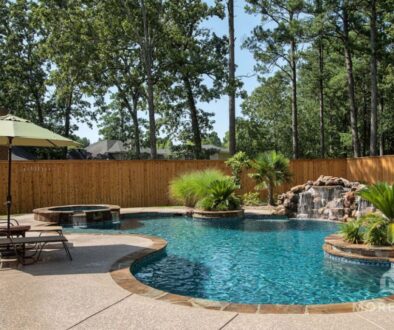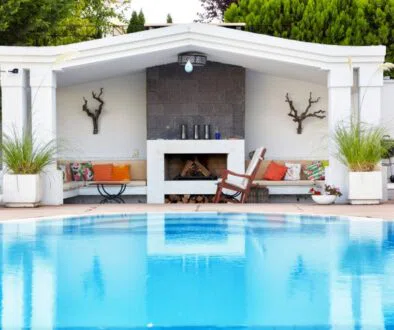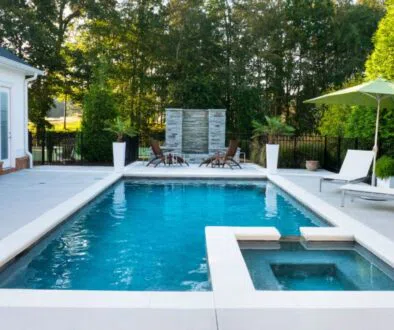How To Choose The Best Pool Plaster Color
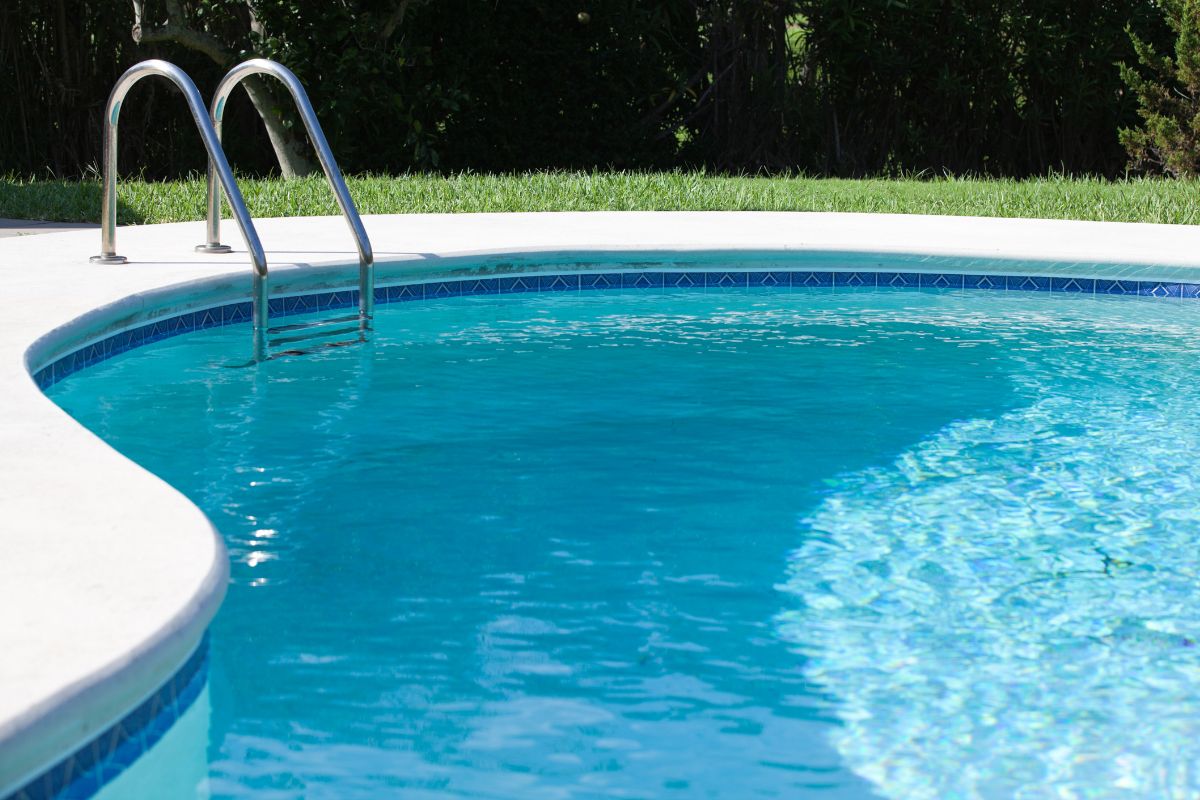
Published May 7, 2024
Are you dreaming of the perfect inground pool look? The secret is in choosing the right pool plaster colors. Several factors influence the hue of your pool’s water: the plaster color, the nearby landscape, the sunlight, and the pool’s depth.
In this article, we’ll examine the advantages and disadvantages of different pool plaster colors to help you determine the most suitable choice for your pool.
Importance Of Pool Plaster
The color of your pool’s plaster can significantly alter its aesthetic. Typically, swimming pool plaster is made from pure white Portland cement. However, you can customize the plaster’s hue by incorporating various dyes or pigments.
This change in plaster color can transform the water’s look and create atmospheres like those of tropical beaches, serene lakes, or exotic lagoons. Pool color choices commonly include shades of blue, teal, and turquoise, as well as light (blue or gray) and dark (gray/black) hues.
Moreover, choosing plaster color can play a crucial role in hiding flaws. Over time, the plaster in an inground pool will fade and wear down due to constant UV rays and harsh chemical exposure in pools. Stains, scaling, and uneven shading are more noticeable in white and light-colored plasters. But, choosing a darker shade can effectively hide these issues.
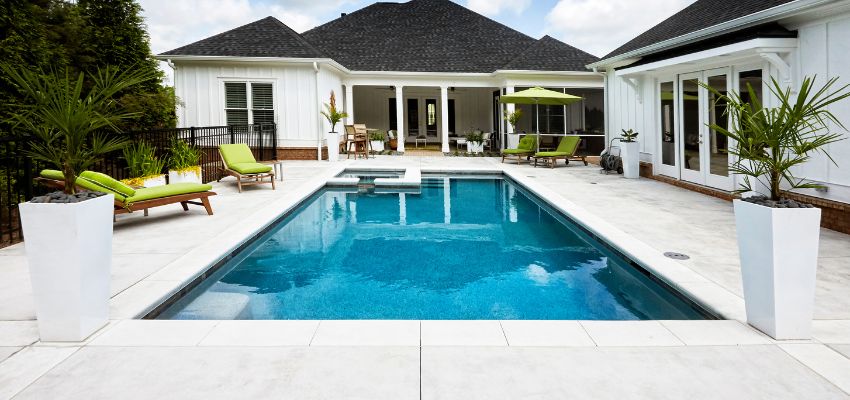
Top Choices For Pool Plaster Colors
Let’s look into some of the best pool plaster colors. We’ll explore their unique qualities and how they make your pool look better.
1. White
Many admire white pool plaster colors for its simple beauty. It catches and reflects light. This quality gives pool water a luminous, blue clarity.
Pros
- Elegant and timeless design
- It efficiently reflects sunlight, accentuating the pool water’s natural blue hue.
- The most economical choice
Cons
- It shows signs of aging and wears more quickly
- Prone to stains and algae development
2. Blue
From the gentle tones of the day sky to the profound depths of the ocean’s hues, blue plaster enhances the water’s inherent color. In a pool plaster colors chart, blue is typically a favorite choice. The colors create an ambiance of tranquility and warmth.
Pros
- Amplifies the water’s natural blue hue
- Offers a diverse palette of shades to complement any design aesthetic
- Crafts a peaceful and welcoming ambiance
Cons
- Darker colors can increase the temperature of pool water on sunny days
- The darker hues may need extra lighting to enhance visibility in the evening.

3. Green
Green plaster ranges from light to dark shades. It blends your pool with the natural environment. The colors create a smooth, organic look that enhances the aesthetic.
Pros
- Harmonizes seamlessly with natural environments
- Its distinctive color palette evokes the serene ambiance of a lagoon or oasis.
- The gentle green tones offer a tranquil, soothing effect
Cons
- A distinctive color that may not suit everyone’s taste
- It can pose difficulties in harmonizing with specific landscape designs
4. Teal
Teal plaster merges shades of blue and green to give the water a vibrant, tropical hue. The color exudes a striking and stimulating effect.
Pros
- Rich and captivating, the palette crafts a tropical aesthetic
- It presents a unique mix of blue and green for an unmistakable appearance
- The color scheme complements traditional and contemporary pool designs alike
Cons
- The vibrancy of colors can fluctuate based on the lighting and the time of day.
- Limited access compared to the more conventional colors
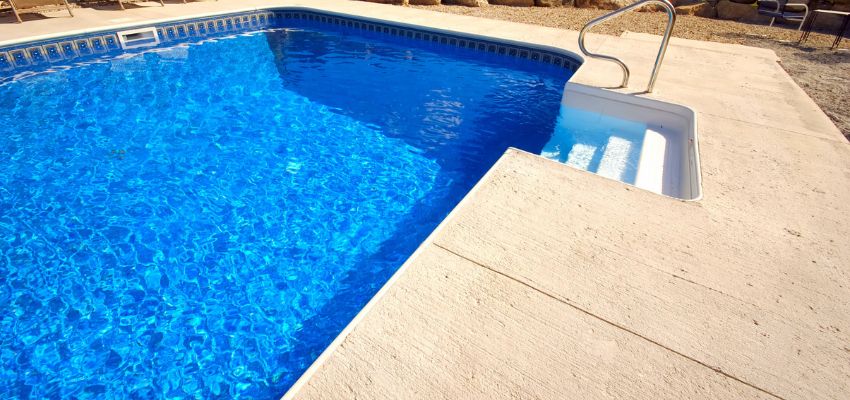
5. Dark Gray/Black
These hues present an elegant, lagoon-inspired ambiance and instill a sense of drama. They can also impart an illusion of enhanced depth in your pool.
Pros
- Imparts a deep, luxurious appearance to the pool
- Ideal for contemporary or modern pool designs
- Aids in maintaining the pool’s water warmth
Cons
- It may hinder the detection of debris and algae on the bottom
- It may require more energy for adequate illumination at night
6. Tan/Brown
These colors are ideal for creating a beach-side or pond look. They enhance the warmth of the water and blend seamlessly with nature-inspired landscape designs.
Pros
- Crafts an ambiance reminiscent of a beach or natural pond
- Enhances the warmth and appeal of the pool area
- Ideal for integrating the pool into a landscaped garden
Cons
- If not complemented by appropriate lighting, the water can appear murky
- Stains and algae might become less visible, potentially causing maintenance problems
7. Pebble Finish
Pebble finishes go beyond simple color. They add texture and depth to your pool’s surface, adding natural elegance to your pool space.
Pros
- Exceptionally durable and built to last
- The textured surface offers enhanced slip resistance
- It comes in many colors and textures. They range from subtle earth tones to striking blues and greens.
Cons
- Typically, these are priced higher than conventional plaster finishes
- The textured surface could be harsh on the feet
- Requires expert installation and ongoing maintenance
When picking from the pool plaster colors, consider more than looks. Also, consider how the color will blend with the pool’s surroundings. This includes lighting, landscaping, and how you will use the pool. Each hue and finish has unique benefits and drawbacks, affecting your pool’s final look and feel.
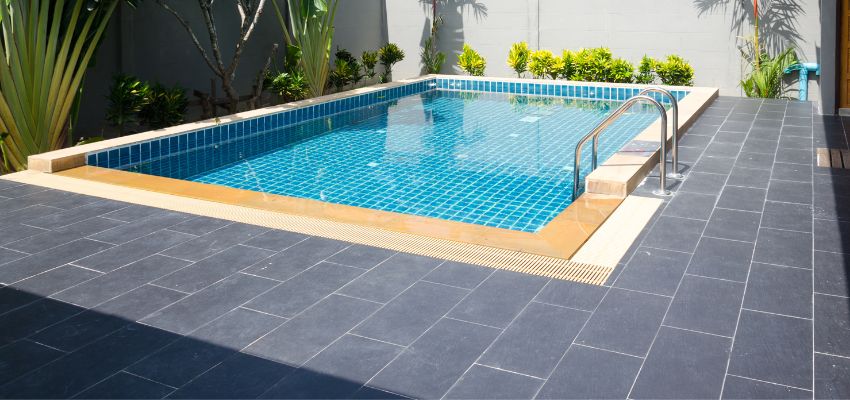
Frequently Asked Questions About Pool Plaster Colors
Can pool plaster colors fade over time?
Yes, exposure to chemicals, sunlight, water, and wear can cause plaster colors to fade. Choosing quality materials and finishes, plus careful upkeep, can keep the plaster color vibrant.
How do I maintain the color of my pool plaster?
Regular maintenance is vital to preserving pool plaster colors. This means balancing the pool’s water chemistry, scrubbing its surfaces to remove algae and minerals, and fixing any leaks or water problems immediately. If you want to keep the pool plaster color clean and vibrant at all times, consider hiring Boca Raton pool cleaners.
How long does pool plaster last?
The durability of pool plaster varies based on its composition and the care it receives. Traditional white plaster lasts 5 to 10 years. More resilient finishes, like pebble or quartz pool plaster colors, can last 10 to 20 years with careful maintenance.
Does pool water chemistry affect plaster color?
Yes, the chemical balance of your pool water can affect the color and longevity of pool plaster. Wrong pH, calcium hardness, and alkalinity can cause discoloration, staining, and etching. Sadly, these can compromise the plaster’s appearance and structural integrity.
Can I change the color of my pool plaster without replastering?
Typically, altering the color of your pool’s plaster necessitates replastering. Nevertheless, other finishes like paint or coatings can offer a temporary color change. But, they tend to lack the durability and longevity of replastering.
How does the color of pool plaster affect water temperature?
Darker plaster hues absorb more sunlight, resulting in higher water temperatures. Lighter shades reflect sunlight, which may help keep the water cooler. It’s crucial to consider this distinction based on your local climate and personal swimming preferences.
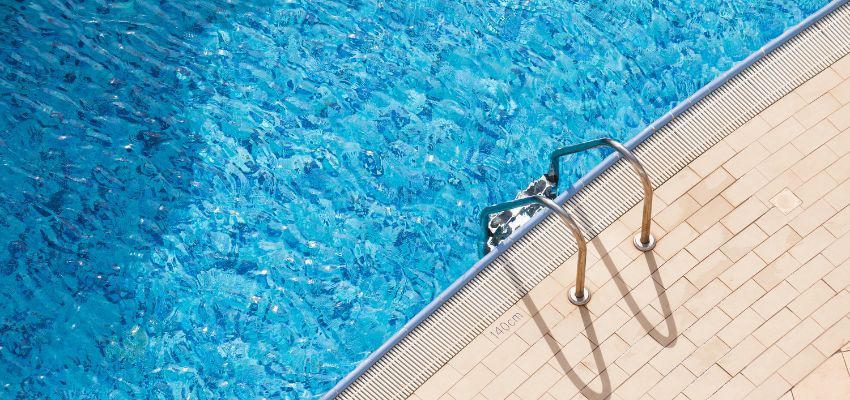
Transform Your Pool With The Perfect Plaster Color
Choosing the right pool plaster color can improve the look of your inground pool. It creates a vibe that fits your style and preferences. Today, pool plaster colors are available for every design palette. Remember, careful maintenance is critical. It keeps the plaster’s color and integrity, ensuring it stays a pleasure source for years.
Hire Boca’s Favorite Pool Builders
Excel Pool and Patio Solutions is your trustworthy provider of pool services in Boca Raton. We are experts in pool and patio remodeling and can handle your resurfacing needs as well. Our technicians are vetted and trained for your guaranteed satisfaction. Get to know us by browsing our website or reaching out to us with any questions.
Contact our team today to request a free estimate for pool construction, maintenance, repairs and more.
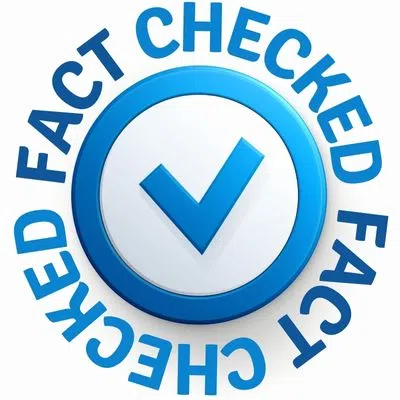
Fact Checked By Experts
This is original content and has been diligently fact checked by our internal team of experts. Discover more about the rigorous editorial standards we uphold for our website here.

About The Author
Hello! I am Corinne, a graduate of Riverside College. My career has evolved into focusing on writing, where I deliver high-quality and meticulously researched content. I have a proven track record of developing helpful articles that engage a wide variety of readers.

